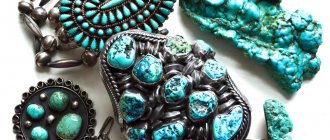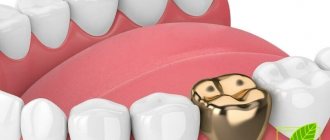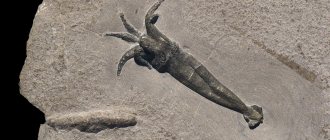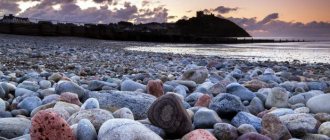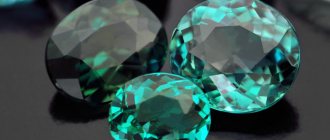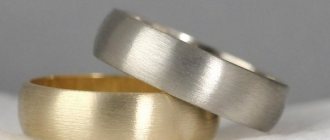Since ancient times, stones have been endowed by people with magical properties. It was believed that the one who had the most precious and natural stones was truly rich. Over time, this has not gone away. And today, one who has a large number of magnificent multi-colored shining stones is a rich person.
However, people have also found use for natural stones. In skillful hands, each miracle of rock takes on a truly majestic appearance. But what is this subject from a scientific point of view? Is a stone a substance or a body? What does it consist of and what varieties is it presented in, how is it used by humans and what names does it bear? Let's try to figure it out.
Is a stone a substance or a body?
To answer this question, one must generally decide what bodies and substances are? Teachers from the fifth grade answer this question to children in their natural history lessons.
All objects of living and inanimate nature are usually called bodies. While substances are precisely the material from which bodies are made. These concepts are closely interrelated. If you build a logical chain, it will take approximately the following form: bodies - substances - molecules - atoms - smaller structures within the nucleus.
By their nature, stones are products of rocks, pieces and fragments from them. Therefore, when answering the question: “Is a stone a substance or a body?” - you should pay attention to this fact. It should also be taken into account that the chemical nature of rocks is different, the substances from which they are composed are specific and not the same. Hence the conclusion: stones are both substances and bodies from the points of view of different sciences.
Agate
The name of agate stones means “lucky” in Greek. Agate has a huge number of species, families, types and subspecies.
In the old days, entire expeditions were sent for agates. The rulers of many states valued this stone very highly. For example, Syracuse demanded that the living decks of his ship be laid out for them.
But agate is not a rare stone, so its cost is low. However, the more unique the shape and color scheme, the more expensive it is. You can find this stone anywhere on the planet where young volcanoes live.
Classification of stones
This question generally remained open for a long time, since different scientists interpreted it each in their own way. As a result, the classification of stones was given only much later, already in the 20th century. Each country has its own. For Russia, the system proposed by V. Ya. Kievlenko (1973) is considered acceptable.
- Precious, or jewelry. Examples: ruby, sapphire, emerald, diamond, beryl, alexandrite, opal, zircon, moonstone, aquamarine, topaz, tourmaline, peridon, amethyst, turquoise, chrysoprase, almandine, rosolite, spinel, citrine, demantoid, spodunite, pyrope. All of them are divided into stones of I, II, III and IV orders.
- Semi-precious, or jewelry-ornamental. Examples: rock crystal, agate, chalcedony, amber, hematite, cahonite, rauchtopaz, amazonite, labradorite, spar, quartz, rhodonite, common opal, beloporite, heliotrope, rose quartz. All are divided into elements of the first and second order.
- Ornamental. Examples: marble, fluorite, selinite, quartzite, granite, jasper, agalmatolite, ganite, onyx, jaspleite, listvenite, jet, obsidian, onyx.
In a broader sense, all types of stones can be reduced to three groups:
- natural;
- artificial;
- synthetic.
This classification is more chemical, since artificial and synthetic samples are obtained by laboratory methods.
The classes of stones that were listed above also have certain divisions within themselves. For example, natural ones have their own special classification and names.
Rauchtopaz
Do you know what rauchtopaz stone is? In fact, this is not topaz at all, but the most natural smoky quartz. Undoubtedly, topaz and quartz are very similar in appearance, but the density of the second is one third lower. There are a lot of disputes and proposals for a new name for the stone, they have been going on for centuries, but jewelers do not have a consensus on this issue.
Some rauchtopazes are striking in their size, reaching a meter in length, or weighing almost 200 kilograms. Others are famous for their color and transparency. The most popular stones are those without defects and with a predominant golden hue.
Rauchtopaz is credited with healing properties. Some native tribes use shards of smoky quartz to perform surgical operations, claiming that it heals wounds much faster.
In the fight against systemic pathologies, lithotherapists offer applications from this stone. It is believed that massage with polished smoky quartz will help get rid of skin rashes and eliminate swelling.
The richest deposits are located in Brazil, the stone is also found in the USA and the Alps.
Stones from a chemical point of view
As already noted, by their nature the elements in question are rocks. Therefore, from a chemical point of view, a stone is a substance. The composition is usually determined by a combination of various metal oxides and their salts.
For example, the chemical composition of the well-known emerald and ruby is almost the same - aluminum oxide AL2O3. The color varies due to different impurities of other elements and light absorption capacity.
We can name several chemical groups of compounds that underlie the composition of all natural, including precious, stones:
- native elements (diamond - C);
- halides;
- sulfides;
- oxides;
- phosphates;
- borates;
- sulfates;
- feldspars;
- scapolites;
- sadolites;
- carbonates;
- silicates;
- grenades.
Each group has its own types of stones, numbering in hundreds of varieties. They can differ not only in composition, but also in color, shape, size, transparency, and density.
The beauty of gems
Precious stones are primarily characterized by monotony (they can be either colorless or have a certain color). A gem can have both “its own” and “foreign” color, which it acquires due to impurities of other minerals that somehow ended up in its composition (for example, semi-precious agate can have a yellowish tint due to inclusions of hematite and iron hydroxides ).
Also, an important role in evaluating a gem is played by its brilliance (the level of refraction of rays, the ability of the stone to reflect them) and transparency. In addition, the beauty of gems is given by optical effects, which are obtained by combining shine, color and transparency:
- Asterism - rays of light diverge from the middle of the gem in different directions. This property can be seen when inclusions of other minerals (ruby, sapphire) are observed along the edges and faces of gems;
- Cat's eye - obtained due to the presence of tube-shaped voids or fibers of other crystals in the structure, giving the gem a silky shine (jade, quartz, chrysoberyl);
- Opalescence is formed as a result of the refraction of rays from the three-dimensional structure of the stone. This property is best expressed in opals, whose colors shimmer and sparkle;
- Iridescence - manifests itself in the form of a rainbow-colored glow in bright light, characteristic of spar, quartz, moon and sun stones;
- Dispersion - a property that can be seen in minerals with high refraction of light rays (diamond). In these gems, waves of purple and red tones shimmer beautifully as they pass through the crystal.
Physical properties
From the point of view of the science of physics, a stone is a body. This means that its properties are characteristic, as for other similar objects: mass, melting and boiling points, density, color, taste, smell, etc.
However, everyone knows that a significant portion of stones have no taste, no smell, and are not capable of melting, but only crushing. Their colors are so varied that it is simply impossible to fit this indicator into a general framework. The palette of radiance of precious and semi-precious stones is complete: from black and white to bright blue, red, green, yellow and purple shades.
In general, we can distinguish several main groups of physical characteristics of stones, both natural and artificial (including precious ones).
- Strength and wear resistance. Based on this indicator, we can distinguish between strong (granite), medium (marble) and low strength (tuff) samples.
- Density. Corresponds to the previous indicator. They are divided into heavy - more than 2200 kg/m3 and light - less than this figure.
- Water absorption capacity, which is determined by the porosity of the structure.
- Acid resistance. The most resistant are granite and limestone. Marble collapses quite easily, as it enters into a chemical reaction with acids.
Thus, we can conclude that a stone is a substance or body of a natural nature, distinguished by a number of physical and chemical characteristics and of great practical importance in people’s lives.
Diamond
This is a mineral that is considered to be metastable, that is, its “life” is unlimited. However, if it is in an environment with an inert gas or in a vacuum at a high temperature, it will turn into graphite. Diamond is considered the hardest on the Mohs scale.
Let's consider what a diamond stone is and what shades it comes in. Most often this mineral is found with a yellow or brown tint, confirming the presence of a defect in the H-3 structure. Colorless diamonds also have this defect, but it is not as noticeable if blue luminescence is present in the stone. There are also minerals of unique colors, for example, the famous Dresden green diamond.
Diamonds are mined on an industrial scale in Russia, Canada, Africa and Australia. Until the end of the 19th century, these minerals were also mined in India, but the deposit in the east of the Deccan Plateau is today almost completely depleted and mining has ceased.
The first Russian diamond was found in 1829 in the Perm region at a gold mine by a 14-year-old boy who received his freedom for this. Later, several more precious minerals were found here, weighing only 60 carats.
Later, diamonds were found in Siberia, but there was no talk of industrial mining in these places.
The first kimberlite pipe outside the African continent was discovered only in 1954 in Yakutia. They called it “Zarnitsa”, then another one was found, called “Mir”. Later, diamond deposits were discovered in the Krasnoyarsk Territory, and searches are still ongoing.
Natural stones
Of course, there are too many of them to cover everything in a description. But we will try to consider the most common ones, those that are used by humans most often.
Any natural stone has a very beautiful and noble appearance. The photo of Stonehenge confirms this perfectly. Even though such samples do not have bright colors and radiance, they amaze with their majesty and splendor.
Varieties
There are several popular examples of natural stones that are used by people in landscape design and construction due to their strength, beauty and environmental friendliness.
- Marble, which can be of different shades and patterns (layered or spotted). Since ancient times it has been used as a stone for architectural structures. From a chemical point of view, it is calcium carbonate CaCO3.
- Granite. It is a material for finishing floors, walls, cladding buildings, creating incredible works of art (monuments, monuments, etc.). From a chemical point of view, it is a combination of feldspars, quartz and dark-colored minerals.
- Sandstone. It is used by people for paving sidewalks, building stairs, and laying foundations. Used since ancient times. Chemical composition: quartz and feldspars.
- Travertine. An extremely dense and strong stone, surpassing marble in hardness. It also has good frost resistance. It is used in construction along with granite and marble. Composed of calcium carbonate minerals.
- Tuff. A beautiful porous stone, quite loose. Used for design of garden plots and cladding of buildings. Chemical nature - calcium carbonate, silicon compounds, volcanic ash and compacted lava.
- Jasper is a beautiful colored stone used for decorative finishes and jewelry. It is a mixture of silicon compounds and iron oxides.
There are also such common stones as slate, basalt, dolomite, limestone and others, which are widely used in construction and are generally used by humans. Natural stone, a photo of which can be seen in the article, is one of the most popular materials for interior decoration today.
Introduction
Natural materials - wood, clay and, of course, stone - have firmly established themselves in home decoration long before the concept of interior design appeared. And if earlier the choice was determined by such material qualities as strength and durability, now visual characteristics are on a par with them.
Decorating walls and floors with decorative stone
A wide choice of colors, textures and formats makes decorative stone one of the most popular materials in interior and exterior decoration. The floor, walls or figured masonry of the fireplace made of natural and artificial stone add a touch of luxury to the room, emphasizing the style and individuality of the interior of an apartment or private house.
To determine which type of stone is right for you, you need to understand the range and qualities of a particular material. So what kind of stone is used in interior decoration?
Artificial stones: classification
Such structures can be divided into four main groups:
- acrylic;
- polyester;
- quartz agglomerates;
- cast marble.
The main feature of each of them is that they are created artificially by man, and therefore are not found freely in nature. Their properties are not inferior to, and sometimes even superior to, those of natural samples.
The main areas of use are the manufacture of countertops, sinks, laying out walls, floors, window sills and other surfaces.
Stones in water - types and properties
Sea stones are an important decorative element for aquariums, bathrooms, and room decoration in the appropriate style. They are very beautiful, varied in shape, size and color, and always attract attention.
What types of such structures exist?
- Shell rock. A natural stone formed over centuries from lime deposits and shell fragments of aquatic inhabitants of the oceans and seas. It has a beautiful milky shade, characteristics suitable for use in construction. Widely used in interior design decoration.
- Pearl. It is classified as a natural sea stone because it is a product of the vital activity of shell mollusks. Used in jewelry, it is highly valued for its strength, beauty and durability.
- Corals. You can also call them sea stones, because over time they turn into very durable structures formed by calcareous minerals, quartz and waste products of ocean inhabitants - polyps. Very varied in color, they are the most spectacular elements in decorating aquariums. Used in jewelry.
That is, sea stones are products of animal origin, formed under the influence of salty sea water and living organisms.
Topaz
What is a topaz stone? This mineral is considered semi-precious. As a rule, it has a rhombic or pyramidal shape. It is formed mainly on islands where aluminum silicate is present.
The topaz stone got its name from the place where it was first discovered. This is the island of Topazion, located in the Red Sea.
Basically, it is a colorless mineral. But there are also blue, brown, golden and pink shades. Some specimens have heterogeneous coloring. All stones have a glassy sheen. They do not dissolve in acid, but only in phosphorus salt.
According to the Mohs scale, topaz stone belongs to the standard mineral.
The natural deposits of the mineral are volcanic rocks. There are known cases where specimens weighing up to 80 kilograms were found.
The largest deposits were found in the Ilmensky Nature Reserve in the Urals. And this crystal was first discovered by the Cossack Prutkov back in the 19th century. There are also deposits in the southern Urals. In Volyn, Ukraine, back in 1965, topaz weighing 117 kg was discovered. And the largest was found in Brazil, its mass was 5.8 tons.

